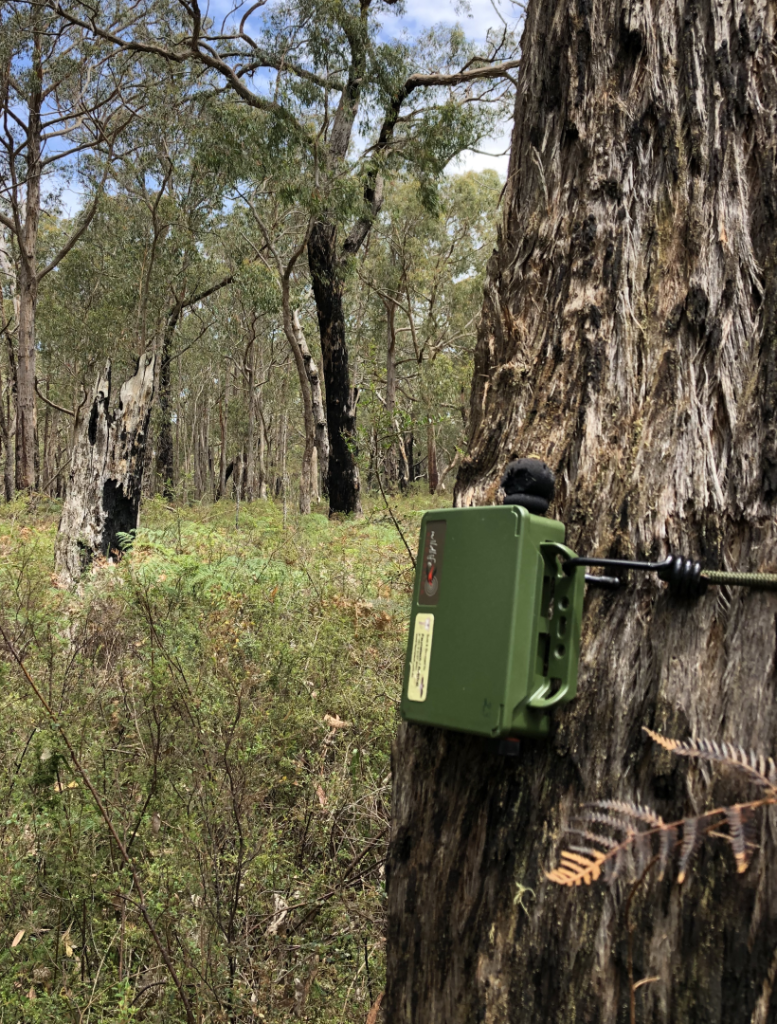Look who’s been captured on camera at Kurrawonga; A base for researchers and wildlife alike
Things have been ticking along nicely at Kurrawonga – NGT’s beautiful brown stringybark (Eucalyptus baxteri) and rough-barked manna gum (E. viminalis ssp. cygnetensis) woodland property. This 100 acre woodland is on the edge of Nelson and the Lower Glenelg National Park, in the far south west corner of Victoria and was very generously donated by the Moore family in 2018.
Being intact, high-quality old-growth woodland, Kurrawonga doesn’t need quite as much work as our other reserves, but of course there is always plenty to do! With help from NGT’s volunteers, the field crew have been slashing tracks, searching for and eliminating weeds, tidying up old bits of machinery and other items, and keeping up maintenance on the small cottage. The property has also been a favourite spot for Nelson Coastcare members undertaking fungi and orchid searches.
On wildlife, a confident pair of collared sparrowhawk (last seen just last week), have frequently turned up over the past few years on our wildlife cameras and may nest nearby. We’ve also had scores of sugar glider, ringtail possum, and dusky and yellow-footed antechinus, as well as the distinctive diggings of southern brown bandicoot and long-nosed potoroo. In some exciting news, a usually elusive potoroo has turned up on a wildlife camera recently (see the photo below).


While protection of the highly valuable old growth woodland at Kurrawonga is top of the list, another key role of the property has been to provide a handy base for ecological research and on-ground works in far south-west Victoria. Recent projects to benefit over the last few months have included native fish surveys in the restored Long Swamp just south-east of Nelson, and spiny crayfish surveys on the coast of SA’s Lower South-East.
Kurrawonga has also had a special guest lodger across multiple field trips – Matt Lefoe, PhD candidate from Deakin University working on yellow-bellied gliders in the region. This is really important work and looks into the impact of bushfire and habitat fragmentation on the population in the far south-west of Victoria. Matt has deployed bioacoustic recorders across 200 sites in areas with historical records of gliders and/or appropriate habitat, with a focus on rough-barked manna gum woodland. Next month we’ll hear from Matt with more details about his project – we’re very keen to hear what he finds and very pleased NGT and our Kurrawonga Reserve can help support this important research.
As summer tails off and the days cool, we’ll be scheduling in some morning working bees at Kurrawonga. It’s a great spot, so if you’re interested in taking a look and helping out one of the nicest patches of old-growth stringybark in the area, send us an email and we’ll keep you in the loop.

